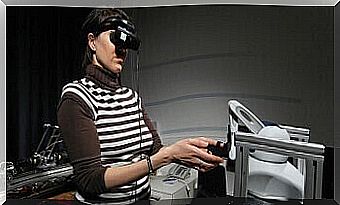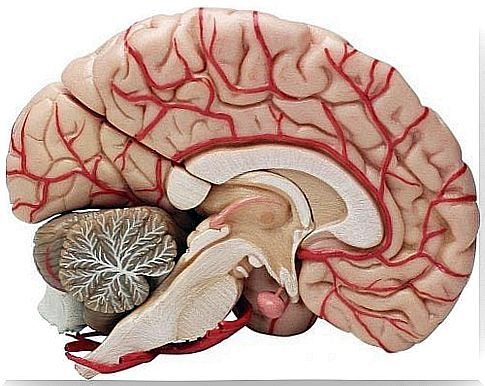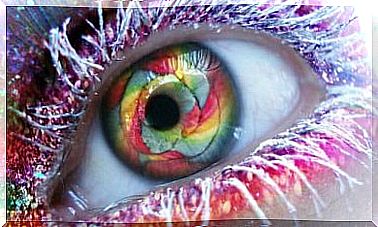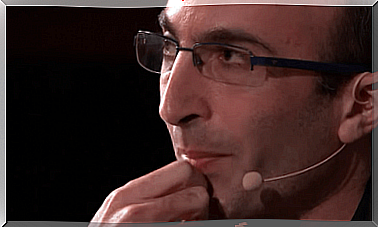Sensation Of Presence: Is There Someone Else With Us?

You may have already sensed that there was someone in the room you were in when you were alone. This feeling of presence, this feeling that a being is nearby, is a phenomenon that occurs more frequently than one thinks. But that doesn’t make it any less scary.
The phenomenon we are talking about is experienced as a very real thing. People who experience it feel that there is someone near them, even though they cannot see it. The person feels that they are not alone when there is no one around. She is also not able to clearly identify a stimulus that confirms this sensation, such as a voice, music or other similar sign.

Is there really a ghost next to you?
Researchers have tried to explain this phenomenon in a rational and scientific way. To do this, they have developed an experience in which some people can “feel” this presence. Scientists recruited 48 sane volunteers who had never had this sense of presence, in order to change certain neural signals in various regions of their brains.
While blindfolded, subjects had to manipulate a robot with their hands. At the same time, another robot was tracing the same movements behind the backs of the volunteers. The result was this: when the movements occurred at the same time, the individuals did not feel anything abnormal.
However, when the movements were not happening at the same time, a third of these people said they felt the presence of a ghost in the room. Some individuals were even so scared that they demanded that the blindfold be removed and the experiment stopped.
This same team of researchers performed a scan of the brain in 12 people with neurological alterations who had already had this sensation of presence. The aim was to determine which part of the brain was associated with this phenomenon. Experience confirmed that the parts involved were those associated with self-awareness, movement and body position in space.

The brain is solely responsible for the sensation of presence
The results of previous research point to the fact that the robot’s movements temporarily change brain function in the regions mentioned. When people sense the presence of a ghost, in reality, the brain is confused. It miscalculates the position of the body and identifies it as if it belonged to another person.
When the brain has a neurological abnormality or when it is stimulated by a robot, it can create a second representation of the body. It is perceived as an alien presence by the individual. This presence carries out the same movements as the individuals and maintains the same position.
The psychology of the imagination
The psychopathology of imagination and perception is a central theme for psychopathological research. In fact, psychological research has given rise to a number of explanatory theories on perception and imagination. However, these theories differ in many ways.
Illusion is a clear example of the fact that perception is not “objectively” determined. Perception is not only influenced by the physical characteristics of the stimulus to be perceived. During the process of perception, the organism reacts to stimuli on the basis of its predispositions, expectations and previous experiences.
All of this prompts us to affirm that our process of perception is not only guided by data but also by our ideas, our judgments and our concepts. For example, if we believe in ghosts, when we experience the sense of presence, we will actually believe that a ghost has made presence at our side.
But how do we know if certain events are happening for real? As Helmohltz pointed out over a century ago, it shouldn’t be so obvious why objects appear red, green, cold, or hot to us. These sensations belong to our nervous system and not to the object itself.

Therefore, it is strange to perceive objects “on the outside” while the process, which is our immediate experience, is happening “on the inside”. However, other classes of experiences, such as dreams, imagination or thought, are experienced “inside”.
It is important to remember that in the act of perception two things are involved: judgment and interpretation. This implies that perceptual inaccuracies and deceptions or errors of the senses are as normal as the opposite, at least in terms of probability (Slade y Bentall, 1988).
The feeling of presence is a perception bias
Perceptual and imaginative disorders are normally classified into two groups: perceptual bias and deception (Hamilton, 1985; Sims, 1988). Perceptual biases are only possible through the help of the senses. These biases occur when a stimulus that exists outside of us is perceived in a way distinct from that which is expected.
In addition, very often, the biases of perception find their origin in organic disorders. These disorders are normally transient and can affect the reception from the senses as well as the interpretation of our brain.
In the case of perceptual deceptions, a new perceptual experience occurs which is not based on stimuli actually existing outside the person (as is the case with hallucinations). Moreover, this perceptual experience tends to coexist with the rest of “normal” perceptions. Finally, it is maintained while the stimulus which produces the initial perception is no longer physically present.
So, how do you classify the sensation of presence? If we reread the preceding paragraphs, the sensation of presence could enter the field of perceptual biases. In the latter, we can establish the following classification:
- Hyperesthesia versus hypoesthesia: abnormalities in the perception of intensity (for example, in the intensity of pain).
- Anomalies in the perception of quality.
- Metamorphosis: abnormalities in the perception of size and / or shape.
- Anomalies at the level of perceptual integration.
- Illusions: it is at this level that we would be dealing with the sensation of presence and the pareidolias. Pareidolias refer to the psychological phenomenon of finding images, figures and faces, perceiving familiar shapes where there are none. It is a very usual game for children.

Is it an illusion if I feel the presence of a ghost?
Indeed, according to the researchers and taking into account the previous classification, it would seem that this is the case. An illusion is a perception bias, insofar as it is an erroneous perception of a concrete object. Daily life offers us abundant examples of illusory experiences.
How many times have we thought we saw the friend we were expecting in front of the cinema. Who has never heard footsteps behind him as he walked down a dark, lonely alley. Or who has never sensed someone’s presence (be it a ghost or not) when there is actually no one in the room.
If you’ve ever felt this sense of presence, don’t worry. Sensing the presence of “someone” does not mean that you are going crazy. This phenomenon can take place during certain vital situations, whether it is a case of extreme physical fatigue or immense loneliness.
However, the sense of presence can also be associated with pathological states of anxiety and fear, schizophrenia, hysteria and organic mental disorders. In this case, we recommend that you consult a specialist for a more precise assessment of your case.










